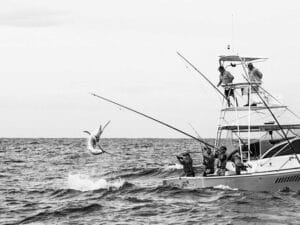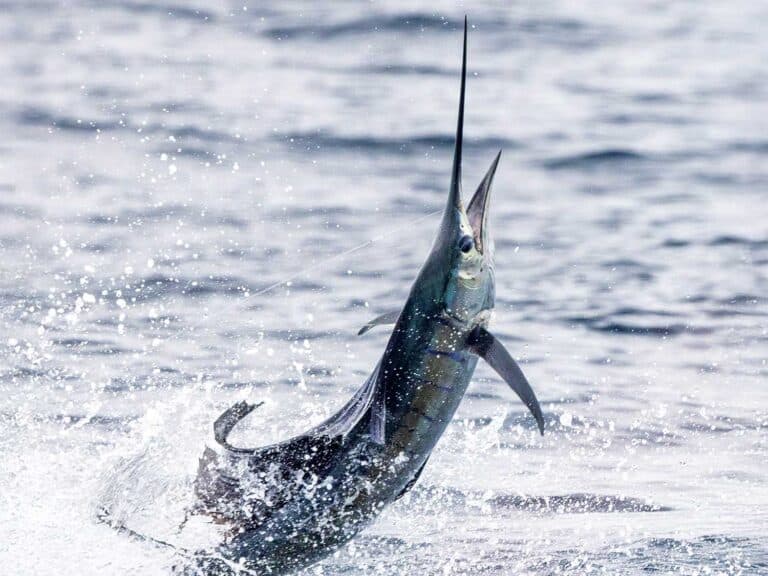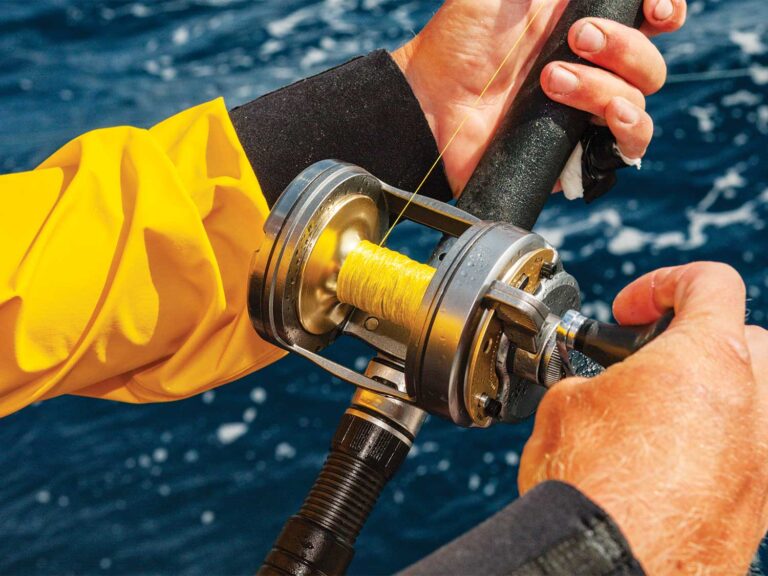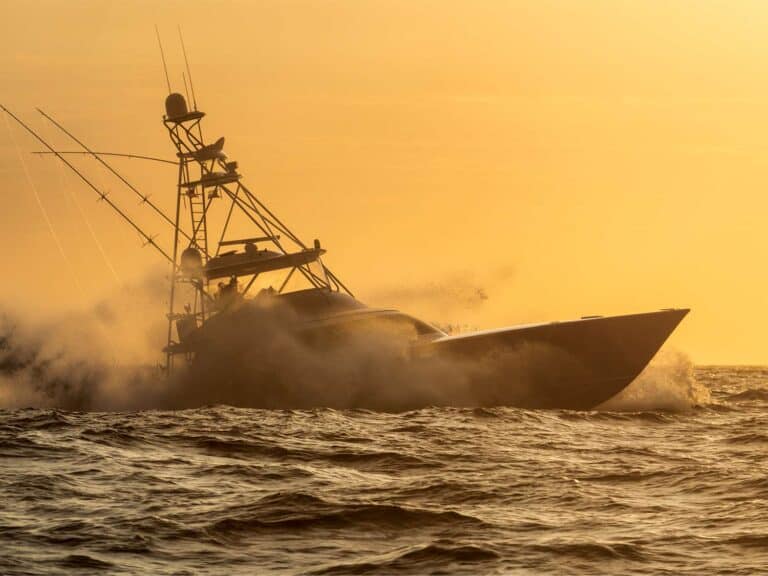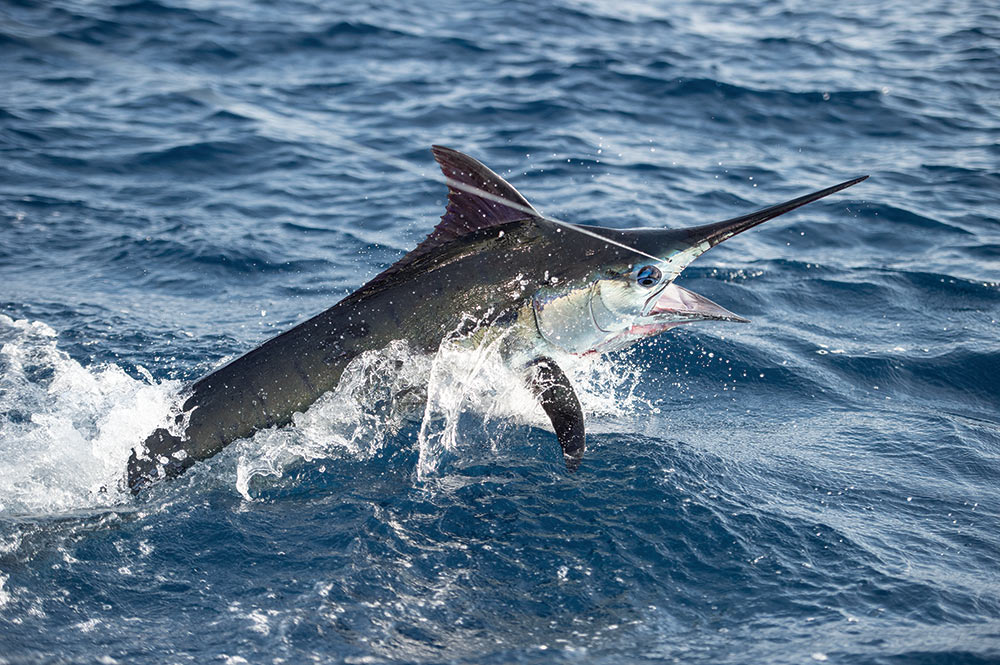
Blue marlin may very well be the most revered species of billfish that swims. And what’s not to like? They are beautiful animals that can grow to gargantuan sizes and test the skill of any angler. Worldwide, there is only one species of blue marlin, scientifically known as Makaira nigricans, but for historical reasons, the IGFA keeps separate categories for Atlantic- and Pacific-caught fish. Currently, the all-tackle Atlantic blue marlin record is 1,402 pounds, 2 ounces, and was caught off of Vitoria, Brazil, in 1992. The Pacific all-tackle record is only slightly smaller, at 1,376 pounds, and was caught in Hawaii. They definitely get a lot bigger though. The largest ever taken on rod and reel was also landed in Hawaii, in 1970, and topped the scales at 1,805 pounds, but was not eligible for an IGFA record because the hook pulled before it was brought aboard. According to the story, the huge marlin had just eaten a large yellowfin tuna hooked by the fishermen that, depending on the source of the tale, weighed between 100 and 200 pounds, and the marlin just lay on the surface, choking on its recent meal, before it was gaffed.
Even though blue marlin represent a single species, whether you’re in the Atlantic, Pacific or Indian ocean, they are managed as different stock units. The stock health, or abundance, varies considerably. The Atlantic blue marlin stock has been in bad shape for the better part of three decades. The last assessment was conducted in 2011 and determined that the stock was still considered overfished and was experiencing overfishing. As a result, the International Commission for the Conservation of Atlantic Tunas established a total allowable catch of 2,000 metric tons, which was a reduction from the maximum sustainable yield target of 2,837 metric tons. ICCAT also created country-specific quotas in the hopes of reducing blue marlin mortality in order to begin rebuilding the stock. Unfortunately, a lack of live and dead discard data, as well as chronic under-reporting from artisanal fishers, has scientists questioning the effectiveness of these management measures. If you read the fine print of the assessment, it’s estimated there is only a 32 percent chance that existing measures will end overfishing and rebuild the stock by 2026. An updated assessment will have been conducted by the time you read this, and it will be interesting to see if things have improved or not.
The Indian Ocean Tuna Commission is the regulatory body tasked with international management of blue marlin in the Indian Ocean. Its 2016 stock assessment reported the blue marlin stock is currently experiencing overfishing but is not currently thought to be in an overfished condition. However, with recent catches averaging nearly 16,000 metric tons and an MSY target of roughly 12,000 metric tons, there’s an 80 percent chance of the stock also becoming overfished during the next 10 years, unless catch levels are reduced.
Learn more about blue marlin biology here
“One species, three stocks, and only one of which is being managed well.”
Blue marlin in the Pacific constitute a single stock and are managed by the Western and Central Pacific Fisheries Commission and the Inter-American Tropical Tuna Commission. The most recent stock assessment was performed in 2016 and concluded that blue marlin in the Pacific are, in fact, doing relatively well and are not currently overfished or experiencing overfishing. Recent reported catches have averaged roughly 18,000 metric tons, and the stock has an MSY target of 19,901 metric tons. The population biomass for this stock is estimated to be just over 78,000 metric tons, with a spawning stock biomass — the amount of mature females — estimated at just less than 25,000 metric tons.
One species, three stocks, and only one of which is being managed well. While things currently look good for the moment in the Pacific, the Indian Ocean and, especially, Atlantic blue marlin stocks have a way to go in order to reach sustainable levels.
